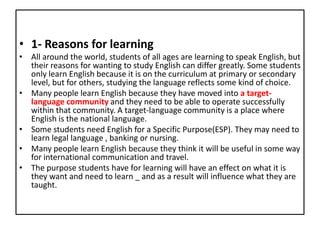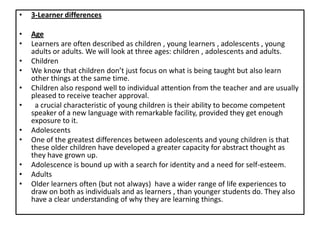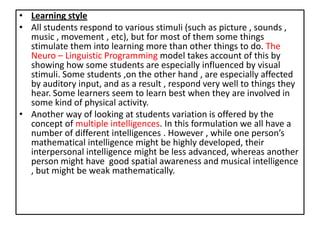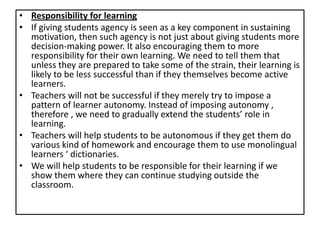This document discusses different factors that affect how and what is taught when teaching a language. It covers reasons students learn a language, different learning contexts like EFL vs ESL, class sizes and settings, learner differences in age, learning styles, motivation and responsibility. Key points include how the purpose and context of learning influences what is taught, differences between EFL, ESL and ESOL, effects of class size, availability of technology, and addressing varying needs of children, adolescents and adults.











